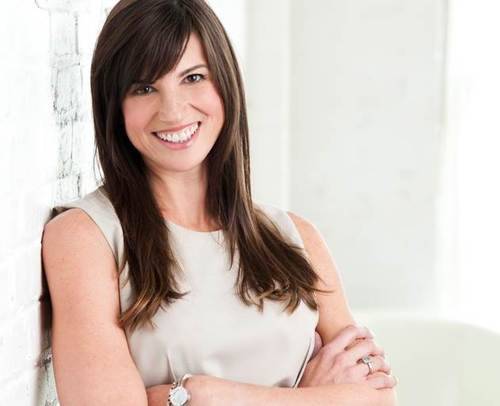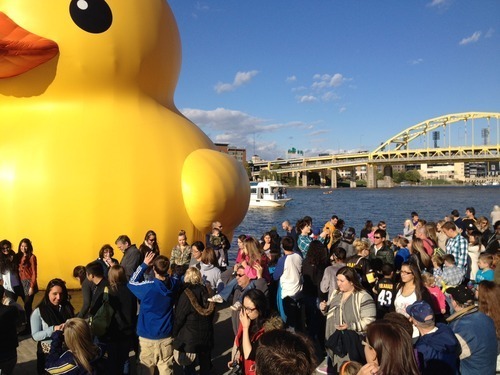By Jill Berardi, Owner of BerardiGroup LLC

When it comes to marketing brilliance, let’s just say artist Florentijn Hofman’s floating “Rubber Duck” blew all other marketing techniques out of the water.
My family and I greeted Rubber Duck on its maiden entry to the United States along the rivers of Pittsburgh, PA, on September 27. There, with thousands crowded among a Friday night bridge party, we fumbled to take 30 pictures at every conceivable Duck-angle of this gigantic, adorable creature anchored to the bottom of Pittsburgh’s Allegheny River. Then, on a sunny October 20, we visited Rubber Duck again — this time to say goodbye. It left hours later.
Brought to the city by the Pittsburgh Cultural Trust as part of the Pittsburgh International Festival of Firsts, Rubber Duck enjoyed a month of national popularity before millions of us reluctantly let it go.

The experience was playful. It was also a marketer’s dream. And here’s why:
1. Huge target audience. From toddlers to 100-year-olds, the Rubber Duck has wide appeal. In fact, its target audience is 7 billion, other known as the entire globe. As it says on its official website, “Rubber Duck knows no frontiers. It doesn’t discriminate people and doesn’t have a political connotation.”
2. Disruptive idea. The Rubber Duck is defined by its 40-foot bigness. But its best feature may not be its hugeness, but, rather, the way in which it’s out of place sitting on a major waterway, and yet — at the same time — looks perfectly at home.
3. Simple. Effortlessly simple. So simple that I have nothing more to add.
4. It brought people together. We fought traffic and endless crowds to be in Rubber Duck’s presence. We liked the whimsy of feeling that we could slide down its back and plop into the water. We heard about a marriage proposal in front of the duck. We watched our fellow duck admirers and wondered about them as much as we wondered about the duck.
5. Made us feel something. At the Rubber Duck, couples hugged and things were downright joyful. I heard the humming of Sesame Street’s 1970s hit, “Rubber Duckie.” We felt a sense of belonging and a pride that we were doing artsy, creative things. It made us think differently, too. We wondered if air kept it afloat, like a balloon. What happens to it in a sharp wind? Could it tear a hole? As art does, it shook us away from our day-to-day routine and helped us see things from a new perspective. That’s why we’ll remember it.
6. It made us act. As marketers say, it ‘had a call to action.’ It compelled us to want to rent kayaks to get closer. It prompted physical silliness.
7. A lot of people made money. Not just a concept, it was commerce. The Rubber Duck contributed to a reported $10 million to its visiting city of Pittsburgh after duck-watching sightseers travelled across country and then frequented hotels, restaurants and shops. A nearby tourist attraction, Fort Pitt Blockhouse, had a record month.
8. A successful viral campaign. Every brand marketer hopes its idea will go viral, but that only works for a select few…oh, and the Rubber Duck. Rubber Duck had its own Yelp listing. It became an Instagram sensation, spread by thousands of teens making duck faces and selfies. Its Facebook posts dominated our newsfeeds. Grandmothers emailed Rubber Duck pics to friends out of town. We were all the Rubber Duck’s digital advocates, helping to carry its likeness quickly and visually so it didn’t have to.
9. Scarcity. To top it off, Rubber Duck had one more attribute that marketers love: limited supply. Rubber Duck was never in the States before. It may never be here again. With Rubber Duck, we experienced the Halley’s Comet of 2013. It seemingly came once in our life and was destined to be captured and recorded and shared and savored and saved forever.
Can you think of any other project with such a perfect marketing formula?
Jill Berardi is Owner of BerardiGroup LLC, which helps technology startups and other emerging organizations gain traction and grow by helping them seize opportunities in Marketing, Public Relations, and Business Development.






